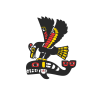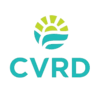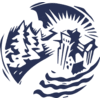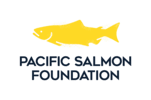Precipitation in the Cowichan Watershed in winter has historically been in the form of rain and snow. In higher mountain areas surrounding Cowichan Lake, the snowpack that builds through the winter is a reservoir of water that augments the capacity of the lake, and contributes significantly and critically to the lake in spring and summer.
Snowpack throughout the province is monitored by the River Forecast Centre of the Ministry of Environment and Climate Change Strategy. Automatic Snow Pillow Stations (ASPs) and manual inspections are both used. This is a description of an ASP from the River Forecast Centre:
Our British Columbia snow pillows consist of 3 metre diameter bladders containing antifreeze solution. As snow accumulates on the pillow, the weight of the snow pushes an equal weight of the antifreeze solution from the pillow up a standpipe in the instrument house. This weight of the water content of the snow is termed Snow Water Equivalent (SWE). The distance the antifreeze is pushed up the standpipe is recorded by a float connected to a shaft encoder. (from What Is An Automatic Snow Weather Station?)
The Cowichan Watershed's first ASP was installed in 2015 on Heather Mountain (3B24P – Heather Mountain Upper) at 1190 m elevation (a little more than 1000 m above Cowichan Lake), replacing two manual station on Heather Mtn. It joins the Jump Creek ASP in the Nanaimo Watershed at 1134 m, adjacent to the Cowichan on the north, which has served as a proxy for a Cowichan Watershed ASP prior to the commissioning of Heather Mtn.
This table summarizes the snowpack data in 2016-17, 2017-18, and to January 1 2019, and compares those years to the 20 year history available for Jump Creek. The manual Heather Mtn. data was not included in this summary. Click here to decode the abbreviations in the table.
The River Forecast Centre issues reports effective to the first of each month from January to June, with additional reports on May 15 and June 15. Click here for Snow Conditions & Water Supply Bulletins.
The Jump Creek chart at the bottom demonstrates how much the snowpack in recent years is reduced from the long term average. The Heather Mtn. chart, immediately below, is still made up of little historical data, unlike Jump Creek. The different scales on the two charts can also mislead so keep this in mind when comparing the two.
3B24P – HEATHER MOUNTAIN UPPER
3B24P – HEATHER MOUNTAIN UPPER
For more information
River Forecast Centre, Ministry of Environment and Climate Change Strategy



 Email
Email



